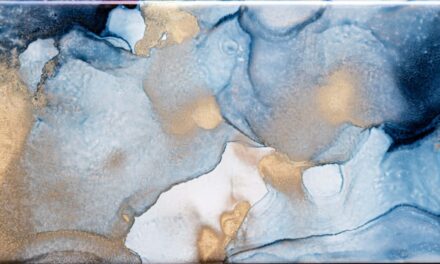The history of whimsical creations in Britain is a rich tapestry woven from the threads of imagination, creativity, and a touch of eccentricity. From the medieval period through to the present day, British artists and inventors have consistently embraced the playful side of life, producing works that delight and amuse. The origins of this whimsical spirit can be traced back to the likes of Lewis Carroll, whose fantastical tales in “Alice’s Adventures in Wonderland” not only captured the hearts of children but also inspired generations of artists and creators.
Carroll’s ability to blend the absurd with the profound set a precedent for future whimsical creations, encouraging a culture that values imagination over convention. As the centuries progressed, the Industrial Revolution brought about a surge in innovation and creativity. This era saw the emergence of playful designs in everyday objects, as inventors sought to make life not only more efficient but also more enjoyable.
The Victorian era, in particular, was marked by a fascination with the curious and the bizarre, leading to the creation of whimsical inventions such as automata and intricate mechanical toys. These creations were not merely functional; they were imbued with a sense of wonder that reflected the era’s artistic movements, such as the Pre-Raphaelites, who celebrated nature and fantasy in their works. Thus, the history of whimsical creations in Britain is not just a chronicle of artistic expression but also a reflection of societal values and cultural shifts.
Summary
- Whimsical creations have a long history in Britain, with a tradition of creativity and innovation dating back centuries.
- British inventors have a knack for coming up with unique and quirky inventions that capture the imagination of people around the world.
- The influence of British culture on whimsical creations is evident in the playful and eccentric nature of many British inventions and designs.
- British ingenuity is not just about practicality, but also about exploring the playful side of innovation and creativity.
- The art of making whimsical creations in Britain is a combination of craftsmanship and innovation, blending traditional skills with modern techniques.
Unique and Quirky Inventions from British Inventors
British inventors have long been celebrated for their unique and quirky contributions to the world, often blending practicality with a sense of whimsy. One notable example is the invention of the rubber duck by Peter Ganine in 1940. This simple yet charming toy has become an enduring symbol of childhood playfulness, transcending generations and cultures.
The rubber duck exemplifies how British inventors have a knack for creating items that are not only functional but also evoke joy and nostalgia. Its bright colours and cheerful design have made it a staple in bath time routines, showcasing how whimsy can be seamlessly integrated into everyday life. Another remarkable invention is the iconic London telephone box, designed by Sir Giles Gilbert Scott in 1924.
While primarily a functional structure for public communication, its distinctive red colour and elegant design have turned it into a beloved symbol of British culture. The telephone box has inspired countless artistic interpretations and has even been repurposed as mini-libraries or art installations, demonstrating how quirky inventions can evolve beyond their original purpose. These examples highlight the British penchant for infusing creativity into their inventions, resulting in objects that are both practical and delightful.
The Influence of British Culture on Whimsical Creations
British culture has played a pivotal role in shaping whimsical creations throughout history. The nation’s rich literary heritage, characterised by authors such as Roald Dahl and J.K. Rowling, has fostered an environment where imagination flourishes.
Dahl’s fantastical worlds and larger-than-life characters have inspired countless artists to create whimsical illustrations and designs that capture the essence of his storytelling. Similarly, Rowling’s magical universe has led to an explosion of creative merchandise, from wands to enchanted creatures, all reflecting the playful spirit inherent in British culture. Moreover, British humour—often characterised by its dry wit and absurdity—has significantly influenced the realm of whimsical art and design.
The works of artists like Edward Lear and his nonsense poetry exemplify this unique blend of humour and creativity. Lear’s playful use of language and absurd scenarios have inspired visual artists to create whimsical illustrations that resonate with audiences on multiple levels. This interplay between literature, humour, and visual art has cultivated a distinctive British aesthetic that celebrates the quirky and the unconventional.
Exploring the Playful Side of British Ingenuity
The playful side of British ingenuity is evident in various forms of artistic expression, from literature to visual arts and beyond. This spirit is often encapsulated in the works of contemporary artists who embrace whimsy as a central theme. For instance, the renowned artist Grayson Perry uses ceramics and tapestries to explore complex social issues through a lens of playfulness and irony.
His vibrant works often feature fantastical narratives that challenge societal norms while simultaneously inviting viewers to engage with them on a personal level. In addition to fine art, British ingenuity manifests itself in playful architecture and public installations. The Serpentine Pavilion in London, designed annually by different architects, often features whimsical designs that encourage interaction and exploration.
These structures not only serve as temporary art pieces but also as spaces for community engagement, reflecting the belief that creativity should be accessible to all. Such projects highlight how British ingenuity thrives on playfulness, fostering an environment where imagination can flourish in both public and private spheres.
The Art of Making Whimsical Creations: Craftsmanship and Innovation
Craftsmanship plays a crucial role in the creation of whimsical art, where attention to detail and innovative techniques come together to produce delightful results. Many British artisans dedicate themselves to mastering traditional crafts while infusing them with a modern twist. For instance, ceramicists like Emma Bridgewater create charming tableware adorned with whimsical patterns that celebrate British flora and fauna.
Her work exemplifies how craftsmanship can elevate everyday objects into pieces of art that bring joy to daily life. Moreover, innovation in materials and techniques has allowed artists to push the boundaries of whimsy even further. The rise of digital technology has opened new avenues for creative expression, enabling artists to experiment with animation, interactive installations, and augmented reality.
British artists like Jon Burgerman utilise these technologies to create immersive experiences that engage audiences in playful ways. By blending traditional craftsmanship with modern innovation, these creators continue to redefine what it means to make whimsical art in contemporary Britain.
Whimsical Creations in Everyday Life: From Household Items to Public Art
Whimsical creations have permeated everyday life in Britain, transforming mundane objects into sources of delight. From quirky kitchen gadgets to playful home décor, British designers have embraced whimsy as a way to enhance daily experiences. For example, products like the “Screaming Whisk” or “Dinosaur Egg Timer” showcase how functionality can be paired with humour, making cooking an enjoyable activity rather than a chore.
These items not only serve their intended purpose but also spark joy and laughter within households. Public art installations further exemplify how whimsy can enrich communal spaces. Projects like “The Big Hoot” in Birmingham involved local artists decorating giant owl sculptures that were displayed throughout the city.
This initiative not only beautified public spaces but also encouraged community engagement as residents sought out each uniquely designed owl. Such projects highlight how whimsical creations can foster a sense of belonging and connection among individuals while celebrating local culture and creativity.
Celebrating British Eccentricity through Whimsical Creations
British eccentricity is often celebrated through whimsical creations that reflect the nation’s unique character. This eccentric spirit is deeply rooted in history, with figures like John Bull representing a quintessentially British blend of humour and individuality. Contemporary artists continue this tradition by embracing quirks and idiosyncrasies in their work, challenging conventional norms while celebrating diversity.
Events such as the annual Henley Royal Regatta showcase this eccentricity through whimsical fashion choices and creative boat designs. Participants often don outrageous outfits or decorate their vessels in imaginative ways, turning the event into a vibrant celebration of individuality and playfulness. Such occasions highlight how whimsy serves as a unifying force within British culture, allowing people to express themselves freely while fostering a sense of community through shared experiences.
The Future of Whimsical Creations: Trends and Innovations in British Ingenuity
As we look towards the future, the landscape of whimsical creations in Britain continues to evolve alongside societal changes and technological advancements. Emerging trends indicate a growing emphasis on sustainability within whimsical design, as artists seek to create eco-friendly products that maintain their playful essence. This shift reflects a broader cultural awareness regarding environmental issues while still embracing creativity and innovation.
Furthermore, the integration of technology into whimsical art is likely to expand even further. Virtual reality experiences and interactive installations are becoming increasingly popular among artists seeking to engage audiences in new ways. As these trends develop, it is clear that British ingenuity will continue to thrive on whimsy, pushing boundaries while celebrating creativity in all its forms.
The future promises an exciting array of whimsical creations that will inspire joy and wonder for generations to come, ensuring that this delightful aspect of British culture remains vibrant and relevant in an ever-changing world.
If you are a fan of Whimsical Creations, you may also enjoy reading about the painting “River Landscape” by Annibale Carracci. This article provides an introduction to the beautiful artwork created around 1595. The piece explores the artist’s unique style and the significance of the landscape in his work. It is a fascinating read for art enthusiasts looking to delve deeper into the world of art history.



